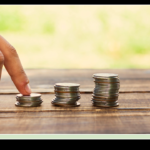Introduction
Investing in mutual funds has become increasingly popular in India due to its potential for generating wealth over the long term. Among the various types of mutual funds, flexi cap funds and multi cap funds have gained significant attention from investors. While both fund categories provide diversification and exposure to various market segments, there are notable differences between them. In this article, we will delve into the dissimilarities between flexi cap funds and multi cap funds and highlight the features that make them unique in the Indian investment landscape.
Exploring Flexi Cap Funds: Dynamic Allocation for Market Opportunities
Flexi cap funds, also known as dynamic equity funds, are a category of mutual funds that offer flexibility in terms of investment allocation across different market capitalizations. The primary objective of flexi cap funds is to capitalize on market opportunities by investing in companies of any size – large-cap, mid-cap, or small-cap. These funds have the freedom to adjust their allocation based on the prevailing market conditions, as per the fund manager’s discretion.
One of the key advantages of flexi cap funds is their ability to adapt to changing market dynamics. When large-cap stocks offer attractive opportunities, the fund manager may allocate a higher portion of the fund’s assets to such stocks. Conversely, during market phases where mid-cap or small-cap stocks are expected to outperform, the fund manager can shift the allocation accordingly. This flexibility allows investors to benefit from potential upside across the entire market spectrum.
Understanding Multi Cap Funds: Diversification Across Market Caps
Multi cap funds, as the name suggests, are mutual funds that invest across multiple market capitalizations. These funds maintain a diversified portfolio, including large-cap, mid-cap, and small-cap stocks. The primary objective of multi cap funds is to provide investors with exposure to companies of various sizes, thereby balancing risk and return potential.
Unlike flexi cap funds, multi cap funds do not have the flexibility to shift allocation based on market conditions. They follow a predetermined allocation strategy where a certain percentage of the fund’s assets are allocated to each market segment. This approach ensures that the portfolio remains diversified and captures growth opportunities across different sectors and company sizes.
The Regulatory Aspect: SEBI’s Categorization
The Securities and Exchange Board of India (SEBI), the regulatory body for the securities market in India, has introduced guidelines to categorize mutual funds and ensure clarity for investors. In 2017, SEBI issued a circular that mandated the categorization of mutual funds into various types, including flexi cap funds and multi cap funds.
To comply with the SEBI guidelines, flexi cap funds must invest a minimum of 65% of their assets in equity and equity-related instruments, with no specific allocation requirement for market capitalization segments. On the other hand, multi cap funds must allocate a minimum of 75% of their total assets in equity and equity-related instruments, with at least 25% allocated to each large-cap, mid-cap, and small-cap stocks.
Key Differences between Flexi Cap Funds and Multi Cap Funds:
Asset Allocation:
Flexi Cap Funds have a flexible asset allocation strategy that allows the fund manager to invest across market capitalizations based on their assessment of market conditions. Multi Cap Funds, on the other hand, have a predefined asset allocation strategy mentioned in the fund’s investment mandate.
Investment Approach:
Flexi Cap Funds follow an active investment approach, allowing the fund manager to capitalize on market opportunities by dynamically allocating funds. Multi Cap Funds may also employ an active approach, but their asset allocation strategy is predetermined and may not change frequently.
Risk and Return:
Flexi Cap Funds, with their dynamic asset allocation, may experience higher volatility compared to Multi Cap Funds, especially during market fluctuations. Multi Cap Funds, with their predefined allocation, may offer a more balanced risk-return profile.
Investment Universe:
Flexi Cap Funds have a broader investment universe as they can invest in companies across market capitalizations without any predefined restrictions. Multi Cap Funds also have exposure to various market segments but within the predefined allocation limits.
Conclusion
In summary, both flexi cap funds and multi cap funds offer diversification and exposure to various market segments. However, the key difference lies in the flexibility of allocation. Flexi cap funds provide fund managers with the freedom to dynamically allocate assets across market capitalizations based on prevailing market conditions, whereas multi cap funds maintain a predetermined allocation strategy across large-cap, mid-cap, and small-cap stocks.
Investors should carefully evaluate their investment objectives, risk appetite, and time horizon before choosing between flexi cap funds and multi cap funds. Flexi cap funds may be more suitable for those seeking dynamic allocation and the potential to benefit from market opportunities, while multi cap funds offer a well-diversified approach across market caps.
As with any investment decision, it is advisable to consult with a financial advisor or conduct thorough research before making investment choices. Mutual funds are subject to market risks, and past performance does not guarantee future returns.
Read more about: Investing, Mutual Funds, SIP






3 Comments